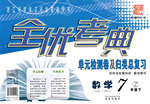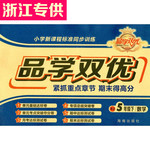题目内容
.
.What you said just now ________me of that American professor.
A. mentioned B. informed C. reminded D. memorized
C

 全优考典单元检测卷及归类总复习系列答案
全优考典单元检测卷及归类总复习系列答案 品学双优卷系列答案
品学双优卷系列答案①Isaac Stern was more than a great violin player. He was one of the most honored musicians in the world. He was an international cultural ambassador. He was a major supporter of the arts in America and in other countries. He was a teacher and activist.
②Isaac Stern was born in 1920 in what is now Ukraine. His parents moved to San Francisco, California the following year. His mother began teaching Isaac the piano when he was six. He began taking violin lessons after hearing a friend play the instrument. Later, he began studying music at the San Francisco Conservatory (音乐学院).He progressed quickly. When he was 16, he played with the San Francisco Symphony Orchestra. The next year, he performed in New York City and was praised by music critics.
③During World War Ⅱ, Mr. Stern played for thousands of American soldiers. It was the first time many of them had heard classical music. After the war, he was the first American violinist to perform in a concert in the Soviet Union. He also supported young musicians and cultural organizations in Israel.
④In 1979, Isaac Stern visited China. He met with Chinese musicians and students. He taught them about classical Western music. His visit was made into a film, which is called From Mao to Mozart: Isaac Stern in China. It won an Academy Award for best documentary film.
⑤In 1984, Isaac Stern received the Kennedy Center Honors Award for his gifts to American culture through music. He expressed his thoughts about the part that music plays in life. He said he believed that music makes life better for everyone, especially children.
⑥Mr. Stern supported and guided younger classical musicians. They include violinists Itzhak Perlman and Pinchas Zukerman, cellist Yo -Yo Ma, and pianist Yefim Bronfman.
⑦Isaac Stern died in 2001 at the age of 81.He was a major influence on music in the 20th century. He leaves the world richer with his many recordings.
【小题1】Which of the following is the RIGHT time order for these events in Stern’s life?
a. He began learning music in an institution.
b. He received the Kennedy Center Honors Award.
c. He visited the Soviet Union.
d. He met with Chinese musicians.
e. He performed for American soldiers.
| A.a, e, c, d, b | B.a, e, b, c, d | C.e, a, b, c, d | D.e, a, c, d, b |
| A.how Stern began to learn music |
| B.how Stern began his musical career |
| C.Stern’s early education |
| D.Stern’s achievement in music |
| A.someone who supports young musicians |
| B.someone who wants to be a musician |
| C.someone who has a gift for music |
| D.someone who plays a certain kind of instrument |
| A.①→②③④⑤→⑥⑦ | B.①→②③④⑤⑥→⑦ |
| C.①②③④⑤⑥→⑦ | D.①②③→④⑤⑥⑦ |
The lights dimmed,the musical hall grew quiet and out walked the conductor (指挥) shiny and white and 4 feet and 3 inches tall.
ASIMO, a robot designed by Honda Motor Co., met its latest challenge Tuesday evening: Conducting the Detroit Symphony (底特律交响乐团), in a performance of “The Impossible Dream” from “Man of La Mancha”.
“Hello, everyone,” ASIMO said to the audience in a childlike voice, then waved to the orchestra. As it conducted, it perfectly mimicked (模仿) the actions of a conductor,
nodding its head at various sections and gesturing with one or both hands. ASIMO took a final bow to excited shouts from the audience. Later, cellist Yo-Yo Ma joined ASIMO onstage to receive an award for his efforts in music education.
Honda spokeswoman Alicia Jones says it is the first time ASIMO has conducted an orchestra, and it may be the first time any robot has conducted a live performance. But ASIMO has its limits. ASIMO's engineers programmed the robot to mimic Charles Burke, the Detroit Symphony's education director, as he conducted the piece in front of a pianist about six months ago. But it can't respond to the musicians.
“It's not a communicative device. It simply is programmed to do a set of gestures,” said Leonard Slatkin, the orchestra's musical director. “If the orchestra decides to go faster, there's nothing the robot can do about it. Hopefully, I keep that under control.”
But several musicians also said ASIMO was more realistic than they expected. “The movements are still a little stiff (僵硬的), but very humanlike, much better than I thought,” Hutchinson said.
1.What's the audience's response to ASIMO's performance?
|
A.Disappointed. |
B.Moved. |
|
C.Excited. |
D.Astonished. |
2.Whose conducting was ASIMO made to copy?
|
A.Yo-Yo Ma's. |
B.Charles Burke's. |
|
C.Leonard Slatkin's. |
D.Alicia Jones's. |
3.We can learn from the passage that ASIMO ________.
|
A.was designed and trained by Yo-Yo Ma |
|
B.can communicate with the audience freely |
|
C.only performs according to the designed programs |
|
D.can change its conducting style freely |
4.What would be the best title for this passage?
|
A.Detroit Symphony gives a good performance |
|
B.Honda robot conducts Detroit Symphony |
|
C.“The Impossible Dream” from Detroit Symphony |
|
D.Cooperation between Honda and Detroit Symphony |